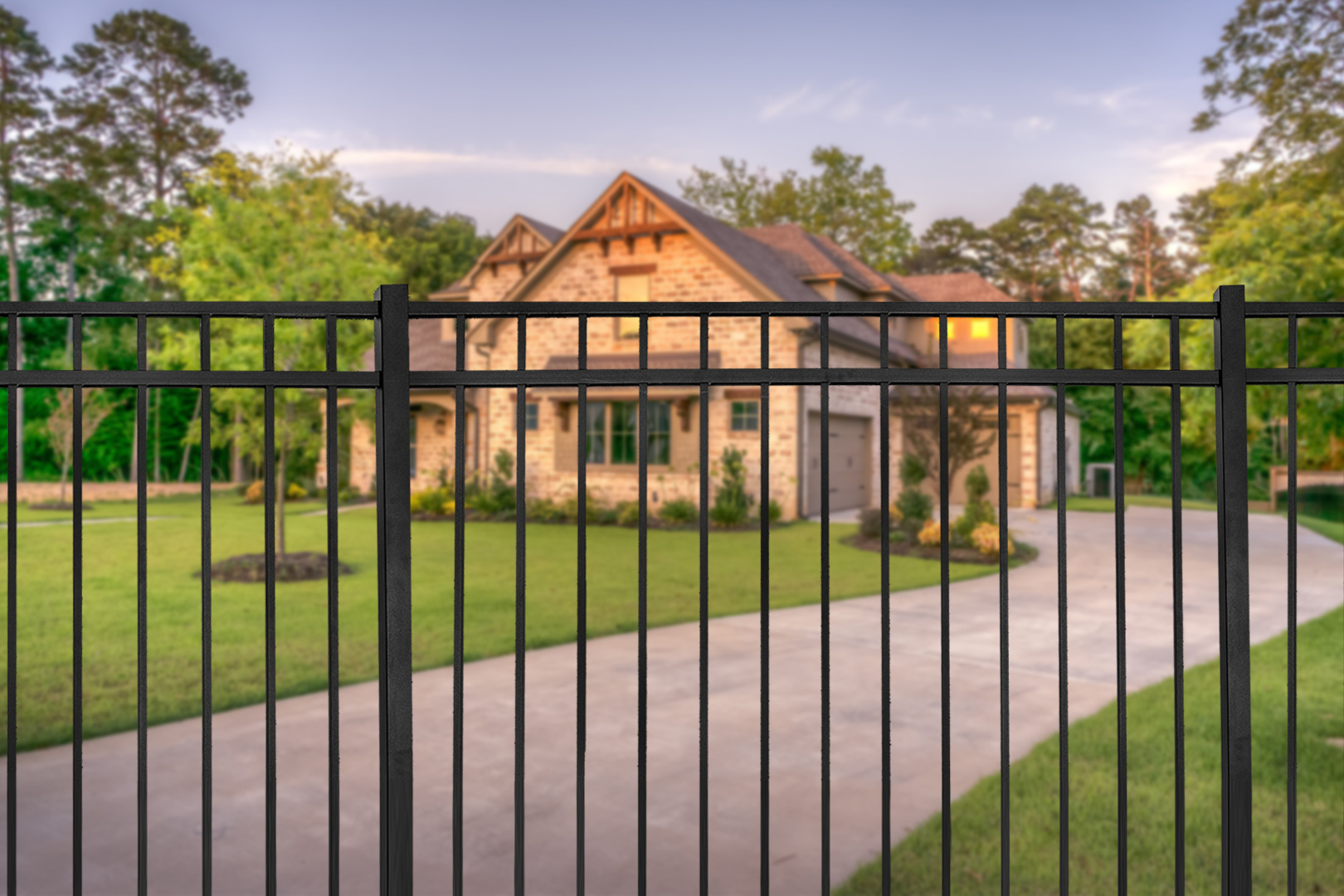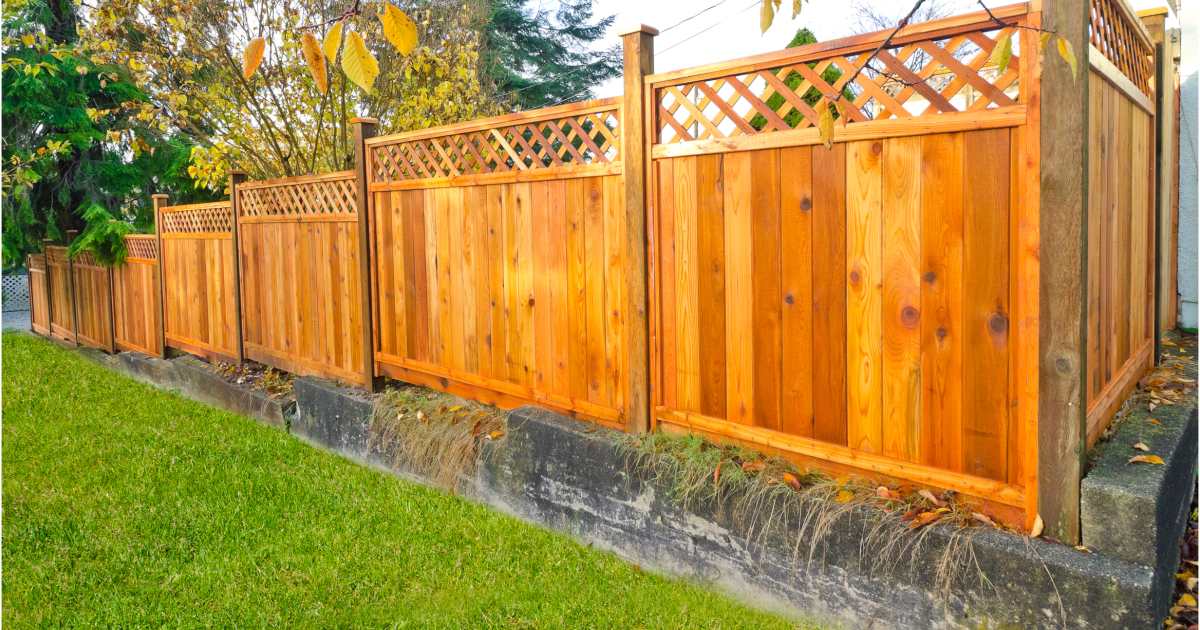All Categories
Featured
Mounting a fence on sloped or uneven surface may appear like a complex task, yet with the ideal techniques, it's completely possible to achieve a beautiful and useful result. Whether you're managing a high slope or a light incline, there are various installation approaches to suit your demands. Here's everything you require to recognize regarding installing a fence on sloped surface.
Obstacles of Setting Up a Fencing on Sloped Terrain. Sloped or irregular surface can create some difficulties during fencing installation, particularly when it involves seeing to it the fencing continues to be level and secure. The primary issue is making sure that the fencing does not look misaligned or end up being unstable in time. An effectively installed fence on sloped land needs the appropriate technique to maintain both structural stability and visual appeal. Without mindful factor to consider, a poorly mounted fence can lead to unequal panels, sagging, and even damages from wind or weather problems.
![]()
Finest Secure Fencing Techniques for Sloped Terrain. When it involves sloped terrain, two primary setup approaches are commonly utilized: the step method and the rack method.
In this layout, each section of the fencing is "stepped" to follow the surface's incline. The specific panels are positioned at various elevations to match the incline of the land, developing a stair-step effect across the size of the fencing.
The action setup method works well with products such as metal, plastic, and wood, and it's a reasonably straightforward installation process. It might leave gaps at the base of the fence in some areas, depending on the size of the incline.
Shelf Installation Technique For steeper slopes, a racked installation could be the much better selection. This method allows the fence panels to comply with the natural incline of the land without stepping. In a racked setup, the panels are set up in a continual line, yet they are gotten used to accommodate the incline. This gives a smoother, much more seamless look compared to the stepped design.
A racked installation makes certain that the fencing keeps a consistent height throughout its size while still adjusting to the slope. This method is specifically matched for chain-link or functioned iron fencings, yet can also work well with wood or plastic fencings that are adaptable adequate to adapt to the terrain.
Picking the Right Fence Material for Sloped Land. The selection of product plays a substantial duty in just how well the fence will perform on uneven ground. Some products are extra adaptable to sloped surface than others, so it is necessary to choose intelligently.
Wood Secure Fencing: Timber is a versatile material and functions well for both stepped and racked installments. It can be tailored to fit any incline, though it calls for regular maintenance to stop degeneration, particularly on uneven surface where dampness accumulation can be a problem.
Vinyl Fencing: Plastic fences are durable, low-maintenance, and suitable for both stepped and racked installations. Due to the fact that vinyl is an inflexible material, it may not be as versatile to steep inclines, yet it still provides a smooth, constant line when set up appropriately.
Steel Fencing (Wrought or chain-link Iron): Metal fencings like chain-link or functioned iron are suitable for sloped surface because they can be adapted to comply with the land's natural slope. Chain-link is specifically adaptable and can be mounted in such a way that allows the fencing to adhere to the terrain's incline without creating voids.
Composite Secure fencing: Composite fencings, made from a mix of wood fibers and plastic, are additionally a great alternative for sloped locations. These fences are strong, weather-resistant, and can be personalized for various kinds of terrain.
How to Get Ready For Installation. Prior to starting a fencing installation on uneven terrain, it's vital to prepare the residential or commercial property properly. Right here are a few steps to take into consideration:
Assess the Slope: Start by measuring the slope of the land. Utilize a degree or a determining tape to identify the incline's intensity. This will help you pick the suitable setup approach and products.
Clear the Location: Remove any barriers such as rocks, trees, or bushes from the location where the fencing will certainly be set up. This will ensure smooth installation and protect against damage to the fence or the bordering landscape.
Inspect Neighborhood Laws: Make Sure that you recognize any local structure codes or policies for fence installments. Some areas have certain guidelines pertaining to the height of fencings, setback demands, or the kinds of materials enabled.
Pick the Right Fencing Kind: Based on your slope and the look you want, select the right materials and setup approach. Timber, vinyl, and metal all have their advantages, but you require to pick the one that fits your particular terrain and aesthetic goals.
![]()
Professional Setup vs. DIY. While it is feasible to set up a fence on sloped or uneven terrain yourself, it might be tough, especially for steep slopes or larger areas. Working with an expert fencing installer can guarantee that the fence is effectively lined up, secure, and resilient. Experts additionally have the experience to analyze the land, make use of the appropriate installation methods, and guarantee that your fence fulfills neighborhood building codes.
Verdict. Installing a fencing on sloped or irregular surface is certainly feasible with the right strategies, materials, and devices. Whether you go with an action or racked installation, or choose one of the most appropriate secure fencing material, guaranteeing that the fence adheres to the contours of the land while remaining secure is vital. Taking the time to evaluate your residential or commercial property, choose the best products, and possibly employing a professional can cause a magnificently installed fence that adds both privacy and curb allure to your home.
Obstacles of Setting Up a Fencing on Sloped Terrain. Sloped or irregular surface can create some difficulties during fencing installation, particularly when it involves seeing to it the fencing continues to be level and secure. The primary issue is making sure that the fencing does not look misaligned or end up being unstable in time. An effectively installed fence on sloped land needs the appropriate technique to maintain both structural stability and visual appeal. Without mindful factor to consider, a poorly mounted fence can lead to unequal panels, sagging, and even damages from wind or weather problems.

Finest Secure Fencing Techniques for Sloped Terrain. When it involves sloped terrain, two primary setup approaches are commonly utilized: the step method and the rack method.
In this layout, each section of the fencing is "stepped" to follow the surface's incline. The specific panels are positioned at various elevations to match the incline of the land, developing a stair-step effect across the size of the fencing.
The action setup method works well with products such as metal, plastic, and wood, and it's a reasonably straightforward installation process. It might leave gaps at the base of the fence in some areas, depending on the size of the incline.
Shelf Installation Technique For steeper slopes, a racked installation could be the much better selection. This method allows the fence panels to comply with the natural incline of the land without stepping. In a racked setup, the panels are set up in a continual line, yet they are gotten used to accommodate the incline. This gives a smoother, much more seamless look compared to the stepped design.
A racked installation makes certain that the fencing keeps a consistent height throughout its size while still adjusting to the slope. This method is specifically matched for chain-link or functioned iron fencings, yet can also work well with wood or plastic fencings that are adaptable adequate to adapt to the terrain.
Picking the Right Fence Material for Sloped Land. The selection of product plays a substantial duty in just how well the fence will perform on uneven ground. Some products are extra adaptable to sloped surface than others, so it is necessary to choose intelligently.
Wood Secure Fencing: Timber is a versatile material and functions well for both stepped and racked installments. It can be tailored to fit any incline, though it calls for regular maintenance to stop degeneration, particularly on uneven surface where dampness accumulation can be a problem.
Vinyl Fencing: Plastic fences are durable, low-maintenance, and suitable for both stepped and racked installations. Due to the fact that vinyl is an inflexible material, it may not be as versatile to steep inclines, yet it still provides a smooth, constant line when set up appropriately.
Steel Fencing (Wrought or chain-link Iron): Metal fencings like chain-link or functioned iron are suitable for sloped surface because they can be adapted to comply with the land's natural slope. Chain-link is specifically adaptable and can be mounted in such a way that allows the fencing to adhere to the terrain's incline without creating voids.
Composite Secure fencing: Composite fencings, made from a mix of wood fibers and plastic, are additionally a great alternative for sloped locations. These fences are strong, weather-resistant, and can be personalized for various kinds of terrain.
How to Get Ready For Installation. Prior to starting a fencing installation on uneven terrain, it's vital to prepare the residential or commercial property properly. Right here are a few steps to take into consideration:
Assess the Slope: Start by measuring the slope of the land. Utilize a degree or a determining tape to identify the incline's intensity. This will help you pick the suitable setup approach and products.
Clear the Location: Remove any barriers such as rocks, trees, or bushes from the location where the fencing will certainly be set up. This will ensure smooth installation and protect against damage to the fence or the bordering landscape.
Inspect Neighborhood Laws: Make Sure that you recognize any local structure codes or policies for fence installments. Some areas have certain guidelines pertaining to the height of fencings, setback demands, or the kinds of materials enabled.
Pick the Right Fencing Kind: Based on your slope and the look you want, select the right materials and setup approach. Timber, vinyl, and metal all have their advantages, but you require to pick the one that fits your particular terrain and aesthetic goals.

Professional Setup vs. DIY. While it is feasible to set up a fence on sloped or uneven terrain yourself, it might be tough, especially for steep slopes or larger areas. Working with an expert fencing installer can guarantee that the fence is effectively lined up, secure, and resilient. Experts additionally have the experience to analyze the land, make use of the appropriate installation methods, and guarantee that your fence fulfills neighborhood building codes.
Verdict. Installing a fencing on sloped or irregular surface is certainly feasible with the right strategies, materials, and devices. Whether you go with an action or racked installation, or choose one of the most appropriate secure fencing material, guaranteeing that the fence adheres to the contours of the land while remaining secure is vital. Taking the time to evaluate your residential or commercial property, choose the best products, and possibly employing a professional can cause a magnificently installed fence that adds both privacy and curb allure to your home.
Latest Posts
Explore Oil Changes & More: Complete Auto Care Solutions from Montclare Auto Repair
Published May 29, 25
1 min read
Explore Oil Changes & More: Complete Repair Options from Montclare Auto Repair
Published May 25, 25
1 min read
Check Out Affordable Auto Repairs with Montclare’s Limited-Time Service Specials
Published May 22, 25
1 min read
More
Latest Posts
Explore Oil Changes & More: Complete Auto Care Solutions from Montclare Auto Repair
Published May 29, 25
1 min read
Explore Oil Changes & More: Complete Repair Options from Montclare Auto Repair
Published May 25, 25
1 min read
Check Out Affordable Auto Repairs with Montclare’s Limited-Time Service Specials
Published May 22, 25
1 min read